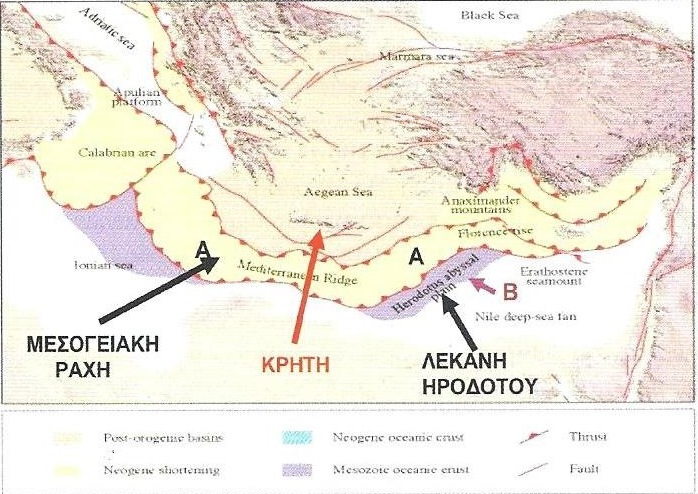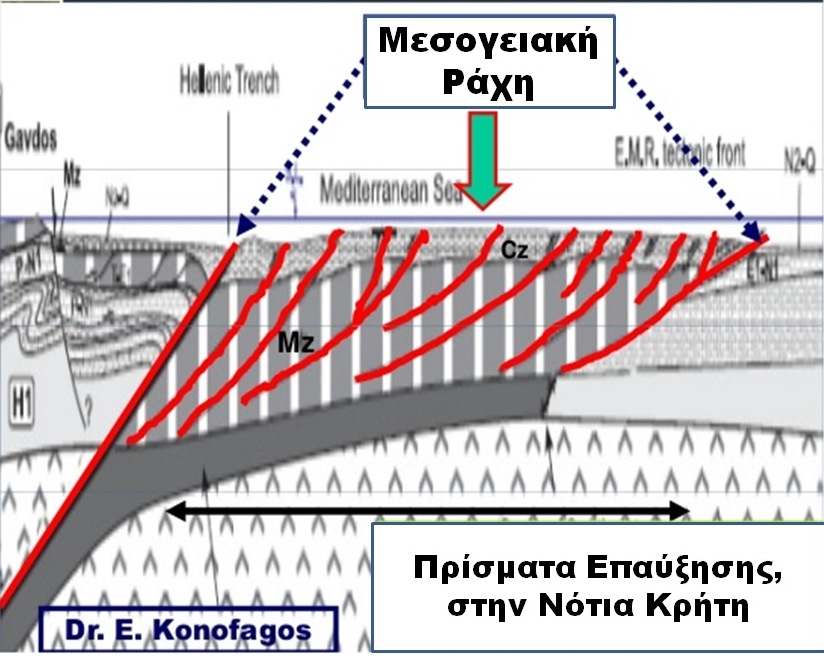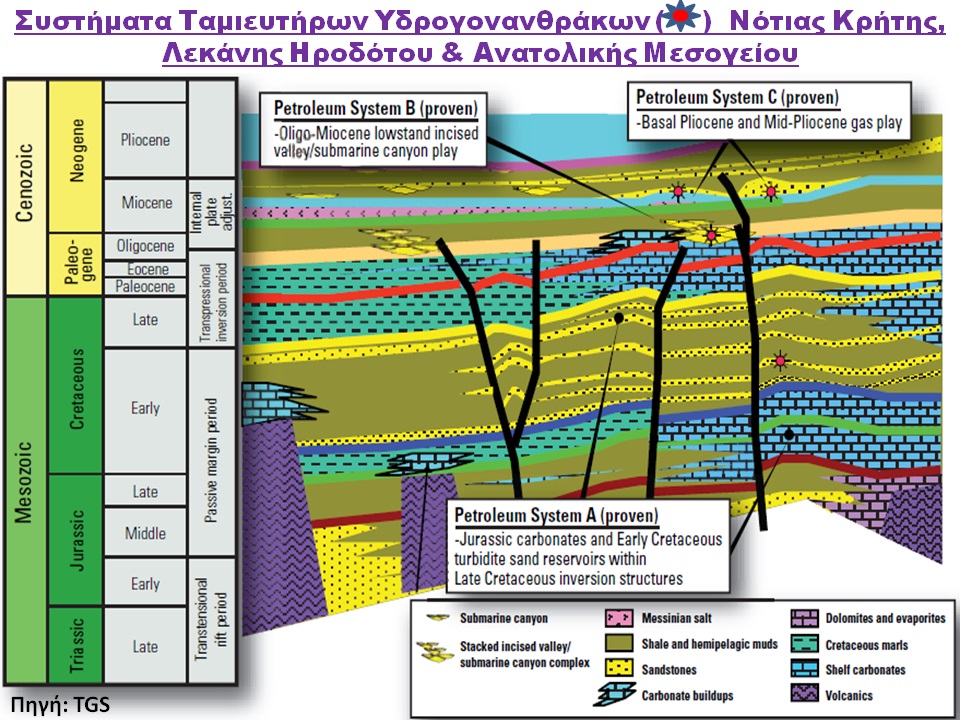21003 - The strategic development of reserves in the Greek EEZ
E. Konofagos, N. Lygeros, A. Foskolos
Translated from the Greek by Athena Kehagias
We had previously stated that the reserves of the Greek EEZ , which are to be located in the Ionian Sea, include almost exclusively limestone deposits (reserves), which are similar to those recently discovered in the specific region, most of which produce oil today in southern Italy (Monte Grosso), in the Southern Adriatic (Rospo Mare), in the Northern Ionian Sea (Acquila), and in the Southern Ionian Sea (West Katakolo). The most serious disadvantage of these deposits is their small porosity which is quite often less than 10%, while simultaneously they portray a significant internal dissimilarity.
On the contrary, the Greek EEZ south of Crete, holds great capabilities of the discovery of psammite (Sandstone) deposits, similar to those recently discovered in Cyprus (Aphrodite), and Israel (Lebiathan and Tamar) with porosity often exceeding 20%.
The targeted reserves are expected to be identified in the future with more detailed seismic surveys within the underwater augmentation prisms of the Mediterranean Ridge, but at the Herodotus Basin also, south-east of Crete, where admittedly there are gigantic psammite (Sandstone) target reserves.
It is a known fact that the psammite (Sandstone) deposits generally have a greater uniformity and therefore their development and production, from a technical and practical point of view, are much easier, with much less production cost, which consequently makes the whole investment more effective.
Based on the above stated, we observe that the strategy followed until now has not taken the above mentioned facts into consideration.
The competent ministry has given priority to the research of the Ionian Sea, where petroleum targets present a much higher development and production risk for the contractor Companies, and with terms that were not attractive enough to the investors.
It is obvious that in the future the Greek policy of attracting investments for the research of hydrocarbon location ( natural gas in particular), should intelligently focus on to specific investment incentives (due to the high sea depth) and to the negotiations also, in areas where there are significant chances to locate sandstone reserves, which are located both in Southern Crete and the Herodotus Basin, a factor which also ensures the geostrategic position of Greece in the region, and is directly linked with Cyprus, as it is the contact zone of their two EEZs, so that the field would be clear for our future as well.



